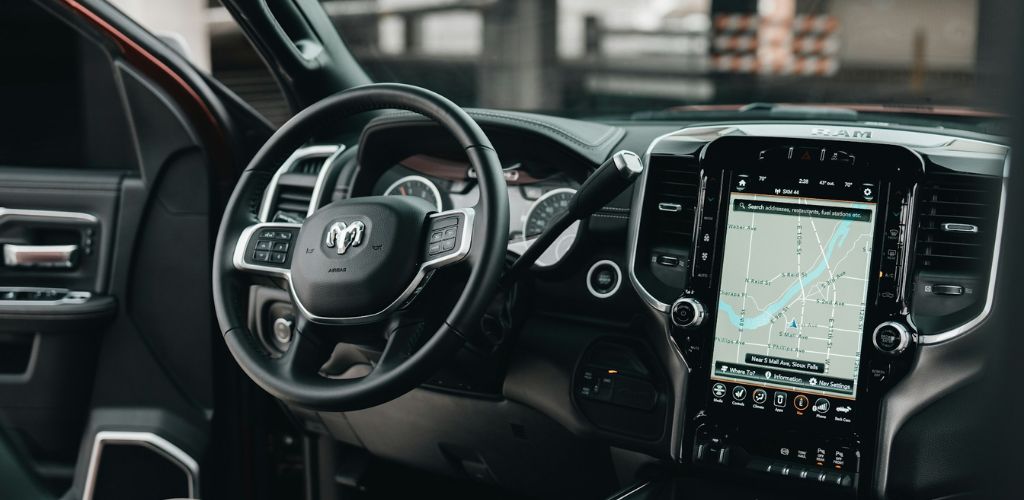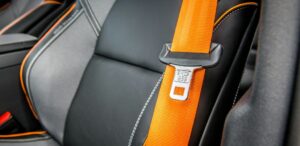It’s been over 130 years since the first motorized vehicle was patented, and, thanks to technological advancements, modern cars are a lot more capable than their cousins of yesteryear. They can go faster, farther, and carry more people than ever before. The drawback? They’re also a lot more dangerous…
Regular safety measures, like making sure you wear your seat belt or going the speed limit, can help, but luckily, technology advancements in safety have been steadily improving. Our team at García Injury Law has put together an article on how your modern vehicle technology, along with human judgment, keeps you safe when you’re on the road.
Airbags
Airbags are an essential tool in the prevention of injury or death in car crashes and are built into the car in a way so that you should only see them if you’re involved in a crash. Front airbags are mandatory, but many vehicles have side airbags, as well. When a vehicle is involved in a crash, the airbag will inflate, protecting the passenger or driver of the car from coming into contact with the windshield, steering wheel, or other solid parts of the vehicle.
Airbags, while part of essential safety equipment, can also cause their own injuries. This was especially true before the turn of the century when forceful airbag deployments could injure or kill car occupants (often the very young, very old, or those who were not wearing safety belts). However, modern technology can now take into consideration the weight of the passenger and deploy a less-forceful airbag, which helps reduce injuries.
Other modern advancements in airbags include:
- Front-center airbags, or far-side airbags, which deploy between the driver and passenger seats to help avoid person-on-person collisions
- Inflatable seat belts, which keep individuals safer than their traditional counterparts
- Seat cushion airbags, which deploy under a person’s legs
Other models that are still in development or with limited worldwide access are:
- Rear seat airbags, which are less-forceful airbags to keep back-seat passengers, particularly children, safe
- Precrash external airbags, which are being developed to anticipate a crash and inflate along the side of the car
- Pedestrian airbags, which are located on the front of the car’s hood to help minimize damage to individuals outside the car
Backup Cameras
Backup cameras that are built into vehicles have a long history. The first backup camera was built in 1956, but it wasn’t until 2018 that they became a staple part of every new vehicle. The camera is located on the back of the vehicle, while the screen for viewing is usually on the dashboard, where a driver can easily see. Backup cameras are helpful tools that allow a driver to check their surroundings more thoroughly before backing up. They help reduce the need to awkwardly crane your neck in every direction before putting your car in reverse and make the street safer for pedestrians or bicyclists.
You can also buy a backup camera separate from your vehicle and install it yourself if you have an older model vehicle.
Lane Departure Systems
Lane departure is a new technology that keeps drivers within the bounds of their lanes. A camera inside the car detects lane lines and will set off a signal when the car gets too close to those painted lines. Different systems have different ways of alerting the driver to their unsteady route. Some cars will have signals that vibrate, some have a light that turns on, and others may make a sound. Some systems automatically engage when the vehicle is started, while others are set in place manually with the push of a button.
Blind Spot Detection
Blind spots are talked about a lot in Driver’s Ed. These are dangerous points along the side or rear of the car where a driver’s view is blocked, and they cannot see. While side-view mirrors are the original blind spot detection, updated blind spot detection technology can assist drivers as they change lanes or make turns, alerting them to cars that may be nearby.
Adaptive Cruise Control
Also called intelligent, active, or dynamic cruise control, adaptive cruise control can monitor how close cars are to each other and automatically adjust the speed of the vehicle, creating a safe distance between vehicles while following speed laws. Adaptive cruise control is a relatively new invention, first appearing in the early to mid-1990s, and is available as an upgrade to a vehicle. As of yet, there are no laws that require automotive makers to install these systems in their vehicles, and they can cost individuals several thousand dollars to include.
Forward Collision Warning Systems
Created in 2000, the forward collision warning system is a tool that alerts the driver that there could be an impending crash. By itself, it does not automatically take control of the vehicle. Sometimes, however, FCW systems are used in conjunction with automatic emergency braking systems to maximize the effect.
Automatic Emergency Braking Systems
It’s the automatic part of this system that really affects the safety measures. An automatic emergency braking system, or AEBS for short, is a tool that uses forward collision warning systems with an added layer of automation. When the sensors detect that a car is approaching another too rapidly, the AEBS will activate and take charge of the vehicle’s brakes, slowing down the car.
This safety feature is a recent standard in automotive manufacturing, with manufacturers making a pact that by 2022, their vehicles will have AEBS embedded in them.
Cross-Traffic Alert Systems
Cross-traffic alert systems are safety features designed to assist in backing out of tight spaces or where there is a lot of traffic as you’re trying to leave a parking space. While you’ll still need to look over your shoulders to ensure a clear path, the cross-traffic alert system will notify you of approaching vehicles as you back up so you can pause to let them pass.
Driver Monitoring Systems
While most monitoring systems track the outside of the vehicle or other cars, the driver monitoring system tracks the driver’s attention. A camera in the steering column monitors the driver’s face to ensure they’re paying attention to the road and staying alert and awake. If the car detects roaming attention, it will automatically break and sound an alarm.
Car Safety Laws: A Quick History Lesson
Cars haven’t always been the safety-conscious vehicles of today. It wasn’t until 1999 that front airbags were required to be installed in cars. And going back even further, seat belts weren’t mandatory in the United States until 1968, and these were only the belts that went across a person’s lap, not the safer three-point seatbelts invented by Nils Bohlin in 1959. Child safety considerations were not considered, and it wasn’t until 1985 that legislation requiring car seats had been passed in all 50 states.
This is all to say that safety technologies have always been improving and will continue to improve in the future. We also know that new laws will be created to help ensure safe road policies. All of these efforts will help to protect your life and the lives of those you love.
Been in an Accident? Contact García Injury Law Today
With these added precautions, we hope you stay safe on the road; however, we all know that accidents happen. If you find yourself in a car accident, contact our law firm at 512-474-4487 or reach out to our lawyers online.




